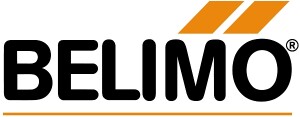A more integrated and digital approach to planning, installation, and commissioning can address the previously mentioned challenges. This includes adopting new project management approaches, leveraging digital planning tools, and utilizing digital workflow management platforms.
New, more collaborative project management approaches, such as integrated project delivery (IPD), will help to align the interests of all parties in a construction project. IPD is an approach where all relevant participants are involved from the very beginning of a project, injecting their expertise and sharing both benefits and risks. This approach reduces siloed thinking, minimizes design conflicts, prevents material waste and rework, and ultimately leads to faster project delivery and lower costs (73).
Digital planning tools, such as building information modeling (BIM) or generative design, support collaborative project management approaches and will be increasingly adopted. BIM offers a digital 3D representation of a project’s physical and functional characteristics, ensuring accurate, up-to-date information and serving as a reliable decision-making foundation throughout the project lifecycle. Enhanced by AI, BIM tools can also automatically identify potential issues before they arise or increase planning efficiency and variant discussion by means of algorithm-based and automated planning. Studies show that 75% of BIM adopters report a positive return on investment. Beyond design, BIM can also model execution schedules (BIM 4D) and costs (BIM 5D), helping to keep projects on time and within budget (74). The use of BIM also paves the way for digital twins, laying the foundation for operational efficiency improvements during the installation and commissioning phases (75). Data needed for the commissioning of a device can be downloaded from a cloud-based digital twin prior to delivery, allowing devices to arrive pre-configured and ready for installation at the construction site. This reduces on-site installation times, minimizes errors, and ensures seamless integration between systems.
Finally, digital workflow management tools will improve material handling and progress tracking. These tools enable the streamlining of material flows and provide real-time monitoring of construction activities. Enhanced by technologies such as drone-supported inspections, these tools will enable more accurate progress tracking, identify potential delays, and improve transparency and accountability, allowing project teams to adapt quickly to changing circumstances.







